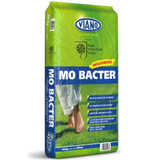What to do in the garden in July
Posted by Mr Middleton on 2nd Jul 2020
Flowers to sow and grow In July
Here are the flowers to sow and grow this July:
July is the ideal time to sow biannual and perennial seeds in trays filled with good quality compost. Try aquilegia, bellis, delphinium and lupin , scabiosa, echinacea and geranium. For flowers that bridge the gap between spring and summer, grow biennials such as forget-me-not, foxgloves, sweet William and beautifully scented wallflowers for flowering next year.
Prepare for winter containers by sowing winter-flowering pansies in the greenhouse.
Vegetable and Herbs to Sow in July
Sow basil in pots to keep on your patio now and to bring indoors for the winter.
Make your last direct sowings of beetroot so they mature in time for autumn. There is still time to direct sow fast-maturing carrots such as 'Nantes Frubund', 'Adelaide' and 'Amsterdam Forcing'.
Sow fast-growing herbs such as coriander, dill, and parsley directly into the ground or into containers. Sow hardy corn salad directly into drills for crops throughout autumn and winter. Direct sow endive for a tasty autumn crop.
Make more sowings of French beans and runner beans if space allows - this will extend your cropping season well into the autumn. Direct sow or start them off in small pots.
Expect to start harvesting in late August. For something more unusual grow kohl rabi - direct sow it now for a crop in approximately 8 weeks.
Continue to direct sow lettuce seeds every three weeks for a continuous supply. July is the perfect time to start your first direct sown crops of pak choi as they’re prone to bolting if grown before midsummer.
Make your last sowings of peas outdoors now so that they develop before the frosts. Direct sow perpetual spinach for autumn and winter cropping. Add colour to stir-fries with radicchio. Seeds can be sown directly into the soil now.
Make small direct sowings of radishes every few weeks to ensure a constant supply. Be sure to water frequently in hot weather and expect to start harvesting within a month. Direct sow salad leaves regularly throughout the summer. Pick the leaves when small and remove any spent plants. Expect to start harvesting in three weeks.
Spring cabbages such as 'Durham Early' should be sown now in a well prepared seed bed for transplanting later. Continue to sow spring onions in drills outdoors for a quick crop to add to salads and stir fries. Add some colour to your plot by direct sowing Swiss chard 'Bright Lights'. This will over-winter to give a bumper crop in the spring. Direct sow turnips 1cm deep. Thin seedlings to 15cm apart and keep moist. Expect to start harvesting in 60 days.
What to do in the Flower Garden
Cut back faded perennial plants to keep borders tidy.
When Penstemon flowers fade, cut them back to just above a bud to encourage more flowers.
Cut back hardy geraniums, delphiniums , and lupins after the first flush of flowers to encourage new growth and further blooms. Apply a liquid tomato feed to encourage further flowers.
After bearded Iris finish flowering in July you should divide clumps so they have time to form roots and flowers buds for next year before the cold weather arrives. This should be done every 3 years or so to keep the plants vigorous.
Tie in and train new growth on climbing plants. Now is the time to prune wisteria. Just remove the whippy side-shoots from the main branch framework to about 20cm from their base (about five leaves from the main stem).
Prune spring flowering shrubs after they finish flowering , do it now to encourage growth for next year.
Keep deadheading bedding plants and perennial plants to stop them self-seeding and to encourage further flowering. Cutting back growth in hanging baskets will encourage new flowers and foliage and will revive the display. Make sure to feed your baskets with high potash liquid feed ,.to keep them flowering all summer. Deadhead sweet peas regularly to keep them blooming. Water daily in dry weather.
Keep an eye out for pests on plants, early treatment is best. Use the Ecofective range for natural chemical free gardening.
Look out for clematis wilt. Symptoms include wilting leaves and black discoloration on the leaves and stems. Cut out all affected material and dispose of it in your household waste.
What to do In the Vegetable Garden
Train cucumber stems upwards instead of trailing over the ground, to make the most of the space available. Simply tie in their long stems to vertical wires or use cane supports to create a wigwam of poles. Pepper plants will benefit from being potted on into progressively larger pots.
Apply a high-potash fertiliser once fruits start to form on peppers, cucumber and tomatoes. Pinch out tomato side shoots each week. Cut off any leaves growing below the lowest ripening fruit trusses to improve air circulation and prevent diseases. Boost your tomato crop by regularly feeding plants with dilute tomato fertilizer once a week. If leaves look pale and yellow feed more regularly.
Nip off the growing tips of squash and courgette plants to encourage branching. Pick your courgettes while they’re young. Regular picking encourages more fruit.
Encourage more marrows by harvesting regularly. Marrows that form in July and August should reach a good size by autumn. Let their skins harden in the sun before cutting them later in September or October. They can be stored into winter.
Pick, dry and freeze herbs for using later in the year.
Pick runner beans regularly to prevent them becoming stringy and to make room for developing pods. Leaving mature pods on the plant can prevent further flowers forming and reduce your crop.
Resist the temptation to harvest more rhubarb stems. Leave the stems in place; this will allow the plant to build up reserves for next year.
Use grass clippings as a mulch around potato plants to stop tubers near the surface from turning green. Alternatively earth up your potato plants as they grow. If you're growing potatoes in bags, gradually add more compost until the bag is full.
Control slugs to prevent them damaging your crops. Try Nemaslug a natural pest control to reduce numbers.
Tackle blackfly on broad beans by pinching off any affected growing tips. Check for cabbage white butterfly eggs under brassica leaves and squash any that you find. Clear away any diseased and spent foliage on and around your vegetable plants to keep them healthy.
Clear weeds regularly, as they compete with your crops for nutrients and water.
What to do in the Fruit Garden
Thin out the fruits on your fruit trees to produce good sized crops. This also helps to prevent brown rot.
Protect any developing fruits from birds and squirrels by placing netting around your plants.
If you have plants fruiting in containers, make sure you give them a high potash liquid feed to keep them healthy and productive. Feed lemons and other citrus fruit trees throughout summer with a special citrus fertiliser.
Treat apple scab with a fungicide. Always read the manufacturer’s label to check the suitability for use on edible crops.
Check the leaves of gooseberry bushes for sawfly larvae, which can completely strip the foliage in a matter of days. Jet them off with water or pick them off by hand.
Peg down runners on your strawberry plants to create more plants for next year. If you don't need more plants simply remove the strawberry runners completely. Prune your plum, apricot, peach and cherry trees now. Pruning these species in the summer reduces the risk of silver leaf disease. Prune the fruited stems of blackcurrant bushes after harvesting. Raspberries are shallow rooted so they’ll appreciate being watered generously in hot, dry weather.










